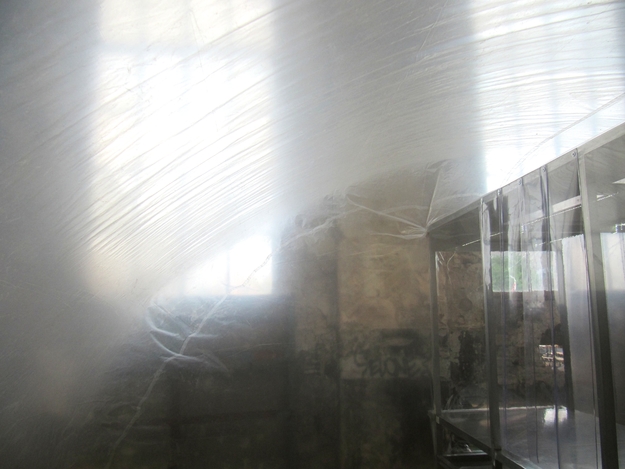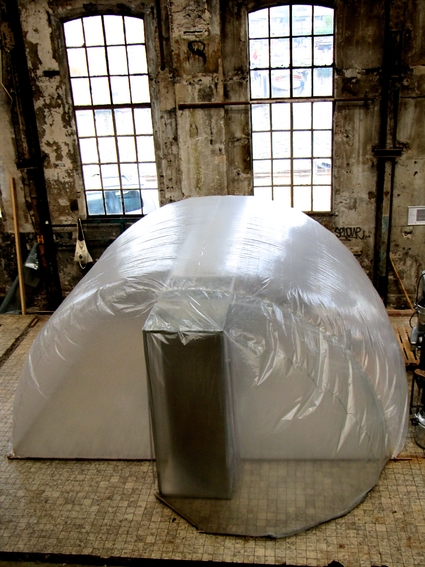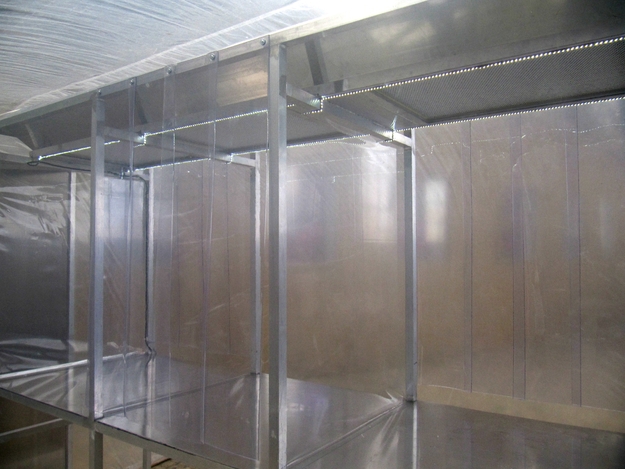2011-2012
Our first cleanroom was built for the Paddestoelen Paradijs Exhibition (http://www.mediamatic.net/230477/en/paddestoelen-paradijs) held from Sep 2011 - Jul 2012. It was specifically designed for our urban mushroom farm in the building at the Vijzelstraat where Mediamatic was based at the time. Though operating according to the same principle, this room was quite of a different structure with permanent glass walls rather than the inflatable one we have now at the VOC-kade. For pictures and short description, see: http://www.mediamatic.net/233861/en/clean-room.
2013
After moving to our present location, having a new work space necessitated a new design for the cleanroom. The properties of our premises at the VOC-kade did not allow for the same design, so we had to think of a new approach. Working with a portable lab seemed a better option here than a room enclosed by fixed walls, which resulted in the idea of designing a mobile metal structure with an inflatable plastic tent. The first prototype was delivered in January 2014. Related article: http://www.mediamatic.net/334533/en/inflatable-clean-lab.
2014
Modelling a space-smart and durable inflatable plastic tent proved to be quite a challenge. After a few temporary solutions a simple construction was designed with more lasting materials. More details here: http://www.mediamatic.net/365870/en/clean-room.
In addition to the main plastic tent a so-called ‘grey room’ , a separate room between the entrance and the clean room for changing clothes, is under development at the moment (you can see the first trial version on the photograph below).
Regarding the inside, the clean bench surface has been divided into four cabinets in order to avoid possible contamination when more people are working in the lab.


